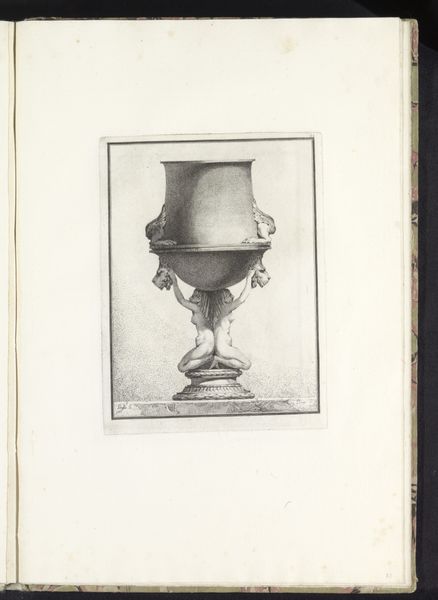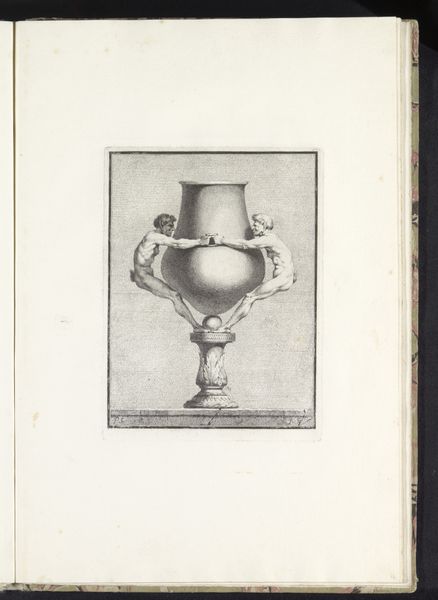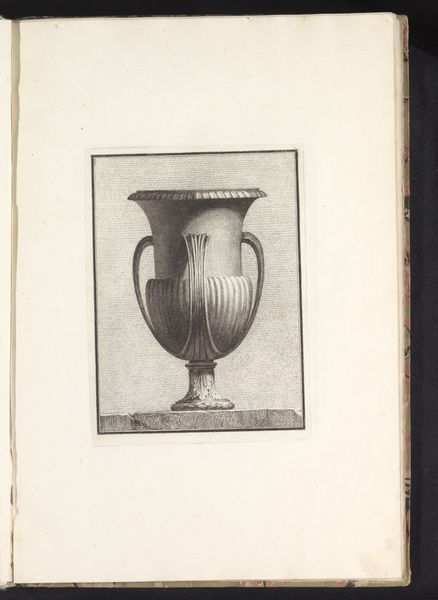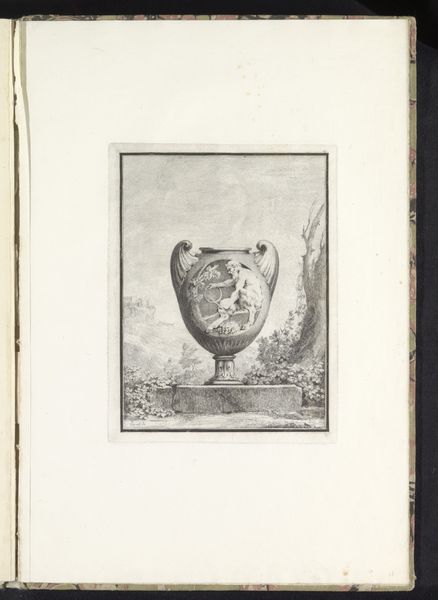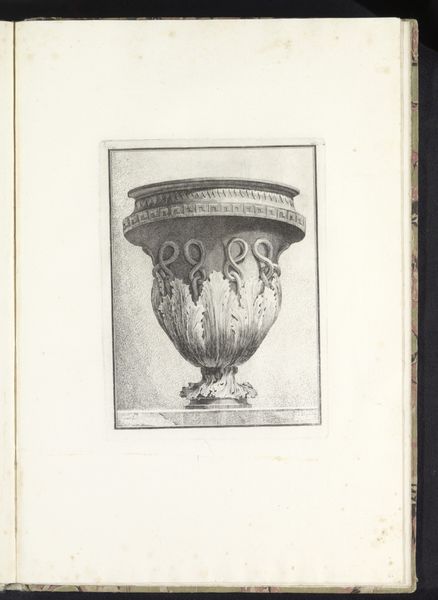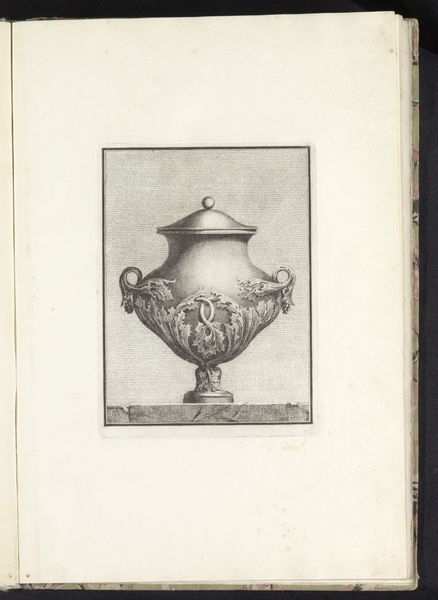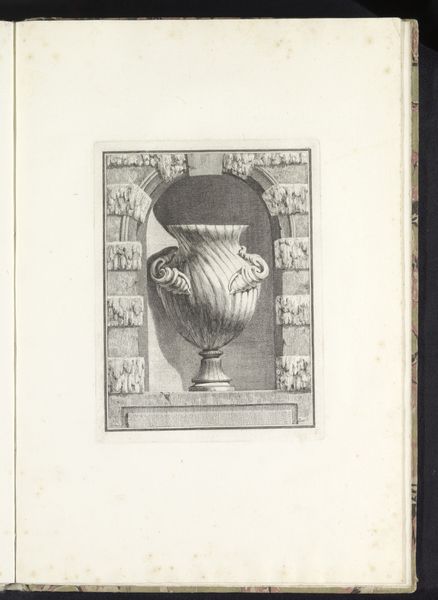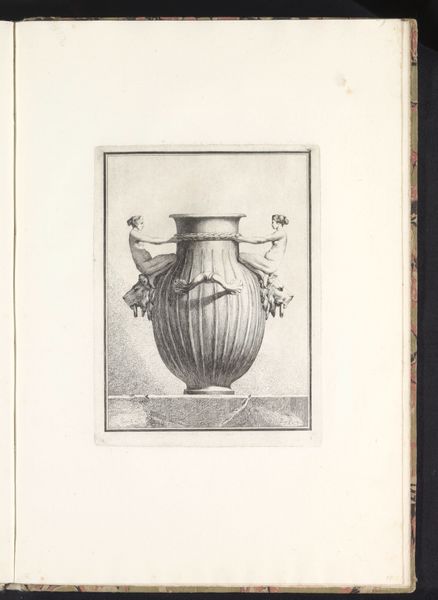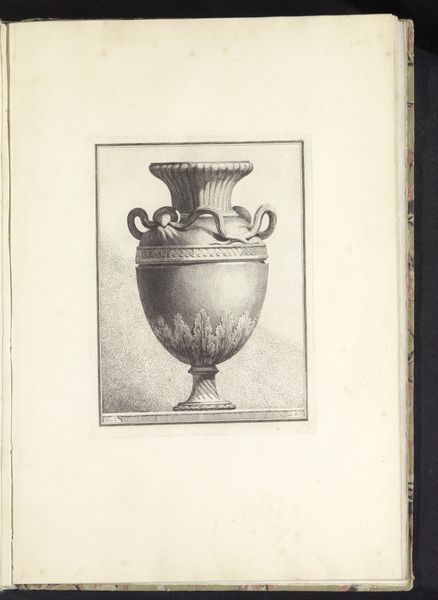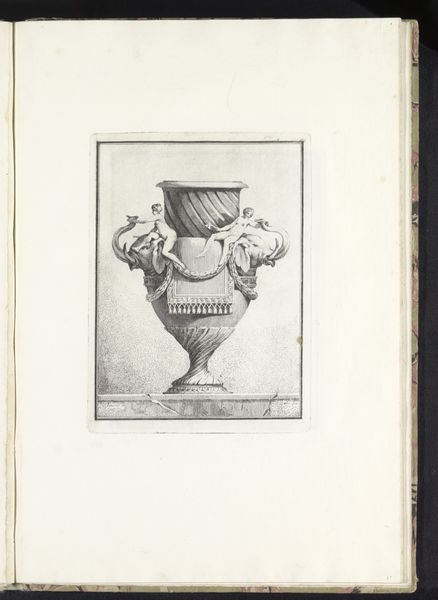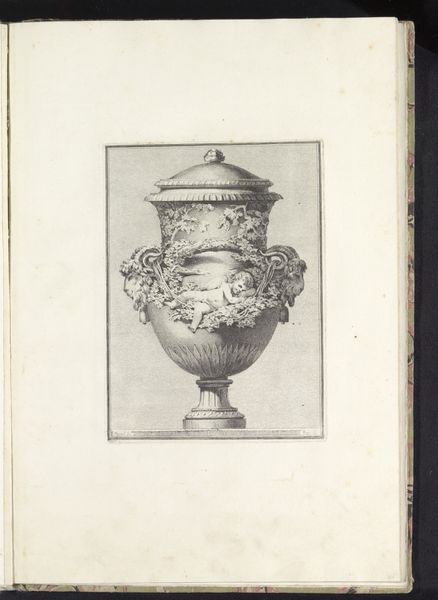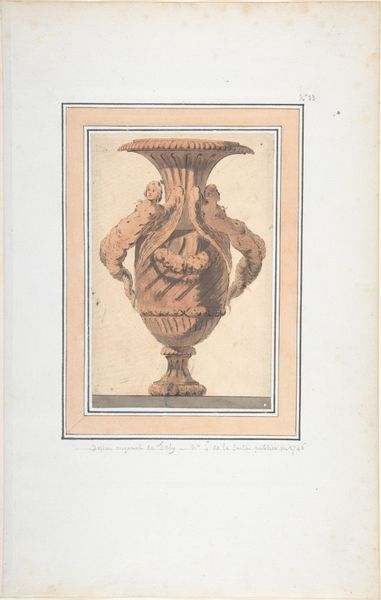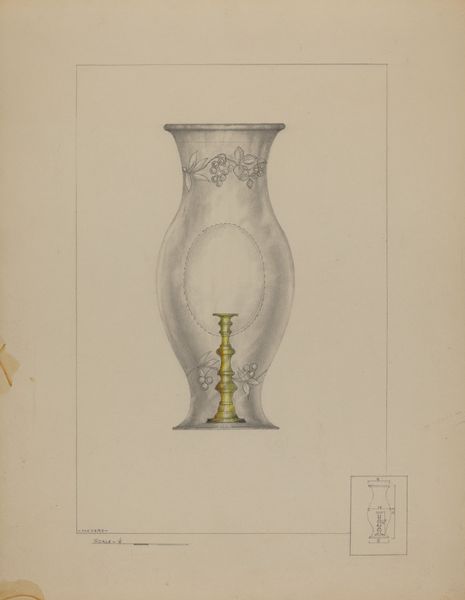
drawing, paper, ink, engraving
#
drawing
#
neoclacissism
#
pen sketch
#
paper
#
form
#
ink
#
geometric
#
pen-ink sketch
#
line
#
academic-art
#
engraving
Dimensions: height 226 mm, width 170 mm
Copyright: Rijks Museum: Open Domain
Editor: So, this is "Vaas met cannelures als oren," or "Vase with Grooves as Ears," an ink and pen drawing from 1764 by Benigno Bossi, found at the Rijksmuseum. I'm struck by its formality and precision. What can you tell me about how this work fits into its historical context? Curator: It's interesting that you find it formal. Considering this piece in light of Neoclassicism, we can observe a conscious return to the perceived purity and ideals of classical antiquity, largely informed by the excavations at Pompeii and Herculaneum. Notice the vase's fluted surface and its geometric shape; how does this object's function intersect with its artistic merit, especially when you consider where and for whom objects like this were produced? Editor: That's a great point. Thinking about its function, was it purely decorative or did these vases play a role in societal rituals? I can see that wealthy people might purchase the physical objects or prints to communicate prestige and refinement. Curator: Exactly! In the 18th century, owning and displaying objects inspired by antiquity became a signifier of social status and enlightened taste. The mass production and distribution of images like this, through engravings, made classical aesthetics accessible to a wider audience, shaping visual culture beyond elite circles. Does this perspective shift your initial interpretation? Editor: Definitely! It helps me appreciate the vase drawing as not just a depiction of an object, but also as evidence of cultural trends, class dynamics, and the democratizing influence of printmaking. Curator: Precisely. And looking ahead, think about how later generations engage with Neoclassicism—whether emulating, critiquing, or subverting it—to construct their own visual and cultural identities. The history doesn't stop in 1764. Editor: I hadn't considered the continued relevance. It's amazing how one seemingly simple drawing can open up such a wide lens onto history. Thanks so much!
Comments
No comments
Be the first to comment and join the conversation on the ultimate creative platform.
